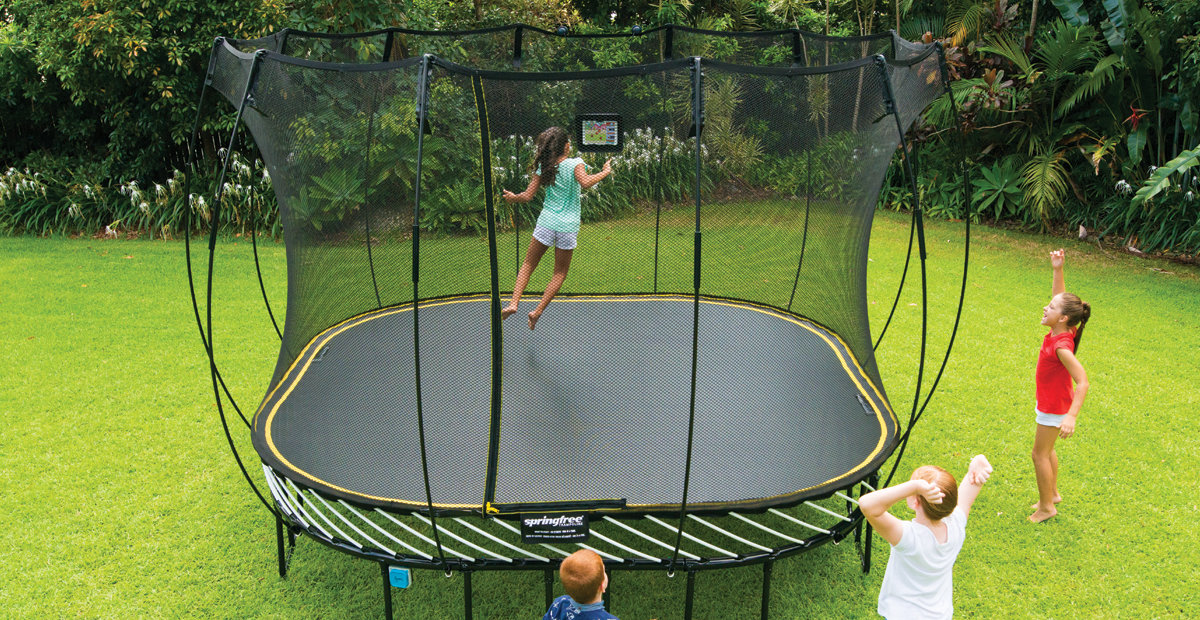Trampolines have long been associated with pure entertainment and physical activity, providing a platform for bouncing joyously. However, beyond the realm of individual enjoyment, trampolines play a significant role in fostering social development among children. In this article, we will explore the ways in which bouncing platforms serve as more than just sources of fun, becoming arenas for social interaction, cooperation, and the development of essential social skills in the formative years of childhood.
- Shared Joy:
One of the simplest yet powerful ways in which trampolines contribute to social development is through shared joy. When children bounce together on a trampoline, the shared experience of laughter, excitement, and the sheer thrill of bouncing creates a bond. This shared joy lays the foundation for positive social interactions, creating a sense of camaraderie among the participants.
- Cooperative Bouncing:
Trampolines provide an opportunity for cooperative play, where children can engage in synchronized bouncing or collaborative activities. Cooperative bouncing not only requires communication and coordination but also fosters a sense of teamwork. Whether it’s creating synchronized jumps or coordinating movements, children learn to work together, laying the groundwork for essential cooperative skills.
- Turn-Taking and Patience:
Trampoline use often involves taking turns, especially in settings where multiple children share the bouncing platform. Learning to wait patiently for one’s turn and respecting others’ time on the trampoline teaches children the valuable skills of turn-taking and patience. These social skills extend beyond the trampoline, influencing how children navigate various group activities and social settings.
- Negotiation and Communication:
Bouncing together on a trampoline presents opportunities for negotiation and communication among children. They may decide on specific bouncing patterns, agree on the rules of a bouncing game, or discuss how to take turns effectively. These negotiations contribute to the development of effective communication skills and the ability to express one’s ideas and preferences within a group.
- Conflict Resolution:
As with any shared activity, conflicts may arise on the trampoline. These conflicts provide a natural context for children to practice conflict resolution skills. Whether it’s resolving disagreements over bouncing styles or addressing concerns about space and boundaries, navigating conflicts on the trampoline teaches children how to communicate, compromise, and find solutions in a socially acceptable manner.
- Inclusive Play:
Trampolines (https://leotoystore.com/collections/trampoline) are inclusive play spaces that accommodate children of different ages, abilities, and backgrounds. Inclusive play on the bouncing platform promotes a sense of belonging and acceptance. Children learn to adapt their play styles to include others, fostering an understanding of diversity and promoting a positive and inclusive social environment.

- Building Friendships:
Trampolines often become hubs for building friendships. Shared bouncing experiences create bonds among children, leading to the formation of friendships that extend beyond the trampoline. The joy and shared memories created during trampoline play contribute to the social fabric of childhood, influencing how children connect with their peers in various settings.
- Peer Observations and Imitation:
Trampolining allows children to observe and imitate each other’s movements. This process of peer observation and imitation enhances social learning. Children may pick up new bouncing techniques or creative moves from their peers, creating a culture of shared learning and inspiring each other to try new things. This observational learning aspect contributes to the social exchange on the trampoline.
- Group Activities and Games:
Trampolines provide a dynamic space for group activities and games. From bouncing relays to group challenges, these activities encourage children to collaborate, strategize, and engage in shared goals. Group games on the trampoline foster a sense of community and encourage children to celebrate each other’s achievements, contributing to a positive social atmosphere.
- Promoting Responsible Behavior:
Sharing a trampoline requires a degree of responsibility and consideration for others. Children learn to be mindful of the space they occupy, avoid reckless behavior that could endanger others, and take turns responsibly. These lessons in responsible behavior extend beyond the trampoline, influencing how children navigate social interactions in various contexts.
Trampolines, often seen as platforms for individual enjoyment, transcend their role as mere sources of entertainment. They emerge as social arenas where children develop crucial social skills, including cooperation, communication, conflict resolution, and inclusive play. As children bounce together, they not only share laughter but also build the foundation for positive social interactions that shape their social development. Trampolines become more than bouncing platforms; they become spaces where friendships flourish, cooperation thrives, and the seeds of social skills are sown, fostering a rich and fulfilling social landscape for children.



